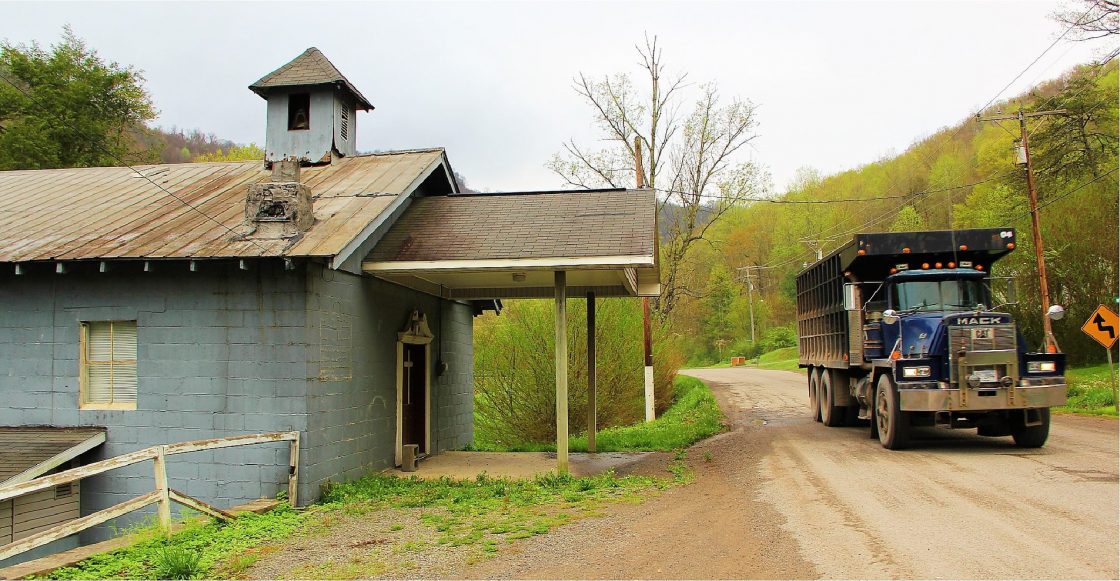Today on Appalachian Moments we stoke the debate on coal and share stories of growing up in coal country.
This podcast is personal. I understand the love/hate relationship with coal. While I have never mined it personally, I grew up in Eastern Kentucky with coal literally surrounding me. My family’s business was located on a sharp curve where coal trucks would pass en route to a tipple where they would dump their coal to be loaded onto the endless lines of yawning rail hopper cars.
One of my first jobs as a kid was to sweep the parking lot clean of the coal that had tumbled out of the trucks before it got crushed into a fine black powder by cars.
I also remember the incredibly somber mood following coal mine accidents that invariably claimed lives. The stoic locals would just explain it away as, “The mountain sat down on them.”
As the first pioneers moved into Eastern KY and West Virginia they began using coal from exposed rocky hillsides and outcroppings. But beyond a blacksmith’s forge, it was not commercially used on a large scale until the railroads blasted their way into Appalachia.
To fill the employment void, miners from Europe and African Americans from the deeper South streamed in and company towns sprang up in the flat of every holler. At that point in time, at the turn of the century, 80 percent of the land in my home county was owned by coal and timber companies.
There was no way to “get ahead” if you worked in a coal company town as several only paid in what they called “scrip” which was a form of money worth only dollar for dollar at the company store at the company’s prices.
You might remember that Tennessee Ernie Ford had a number one hit in 1955 with his song “16 tons” and it goes like this:
You load sixteen tons, what do you get?
Another day older and deeper in debt
Saint Peter don’t you call me ’cause I can’t go
I owe my soul to the company store
For the curious among you the title refers to an old practice of initiating new miners by having them haul 16 tons of coal on their first day, compared to the typical 8 to 10 tons. That weeded out the rookies in short order!
I can remember clearly the economic boom and bust cycles of coal and the union labor strikes and the whipsaw effect it had on miners and their families as they went from poverty to riches and back then to poverty.
The ripples of those early “company towns” are culturally embedded in Eastern Kentucky. It’s nearly inescapable when outside interests still own vast swaths of land.
The dilemma remains as coal, even though greatly diminished, has and even today continues to provide light, warmth and jobs. You might live far from a power plant or further still from an active coal mine, but everything we do has a consequence or a cost and coal is no exception.
The question is: How much are we willing to pay right now for the choices we make in powering this country? And perhaps even more importantly, what of the people who have mined coal for generations? These hard-working families are not going away, their roots are in that bituminous Earth, and they deserve respect, recognition and a path to the future, with or without coal.

